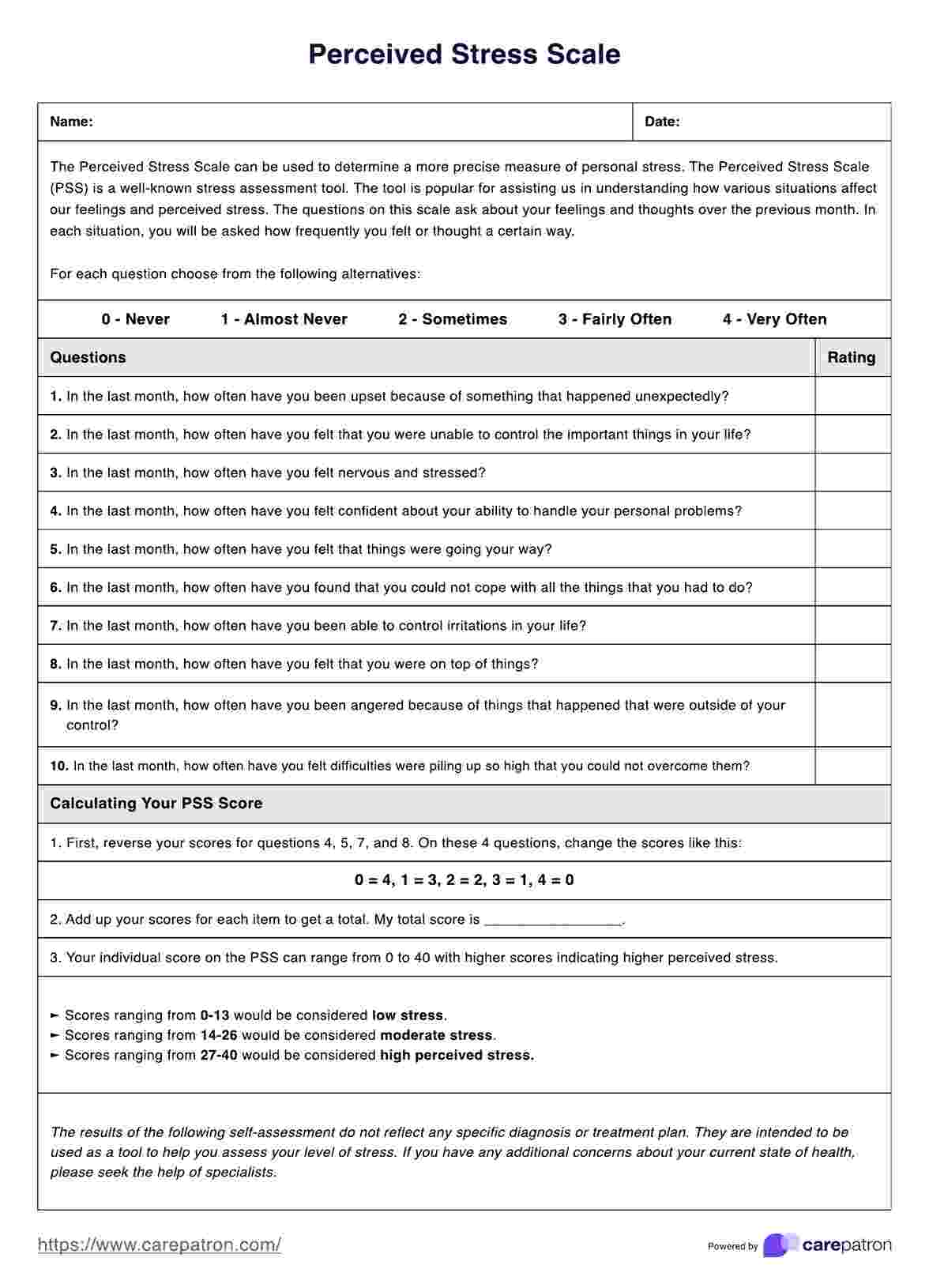The Perceived Stress Scale (PSS) is a 10-item questionnaire designed to evaluate self-reported stress levels by assessing thoughts and feelings related to stress experienced over the past month. The PSS-10 measures the degree to which situations in one's life are appraised as stressful, unpredictable, uncontrollable, and overloading.

Perceived Stress Scale
Use the Perceived Stress Scale to assess your patient's level of stress. You can download our printable Perceived Stress Scale PDF for your work!
Perceived Stress Scale Template
Commonly asked questions
A high score on the Perceived Stress Scale indicates higher levels of perceived stress. Scores ranging from 27 to 40 are considered high perceived stress, while scores from 14 to 26 are regarded as moderate stress, and scores from 0 to 13 are considered low stress. Higher scores are associated with physical illness, less sleep, unhealthy behaviors, and other negative outcomes.
We recommend using other assessments like the Depression Anxiety Stress Scale (DASS-21), General Health Questionnaire (GHQ-12), and Beck Depression Inventory (BDI-II) to cover more ground. You're only assessing the patient's perceived stress, not the roots of what's causing them stress and what influences how they perceive it.
EHR and practice management software
Get started for free
*No credit card required
Free
$0/usd
Unlimited clients
Telehealth
1GB of storage
Client portal text
Automated billing and online payments











